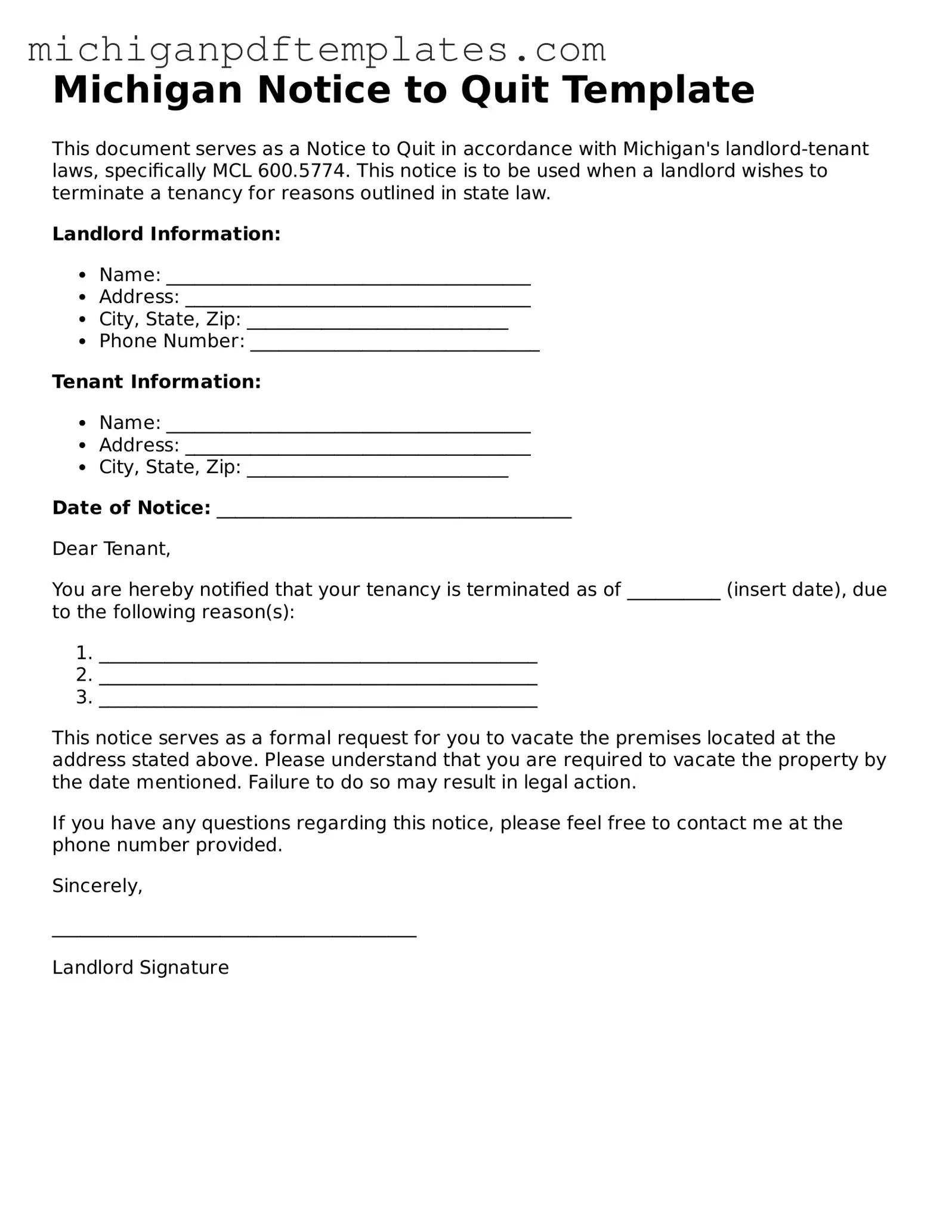Legal Michigan Notice to Quit Template
The Michigan Notice to Quit form is a legal document used by landlords to formally notify tenants of their intention to terminate a lease agreement. This form outlines the reasons for the eviction and specifies a timeframe within which the tenant must vacate the premises. Understanding this form is essential for both landlords and tenants to ensure compliance with state laws and to protect their rights.
To fill out the Notice to Quit form, please click the button below.
Get Your Form Now
